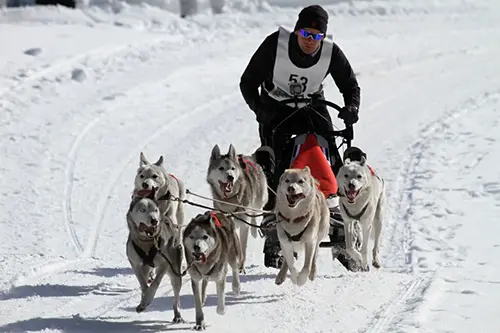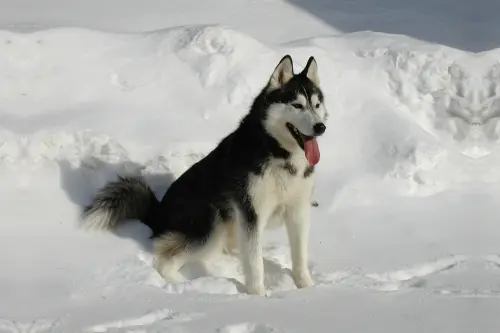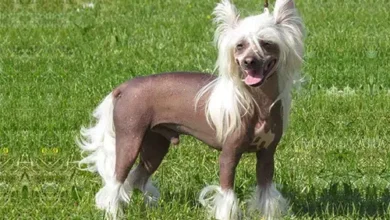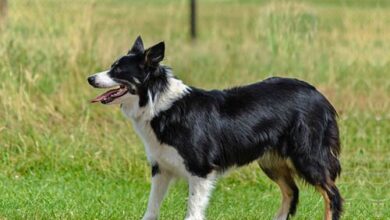Sled dogs: respectful activity of the species or mistreatment?


Opinions on sled dogs differ. High performance sports are always poised between respectful use of the species, tradition and accusations of cruelty to our furry friends.
What are the breeds of sled dogs? What characterizes these sports paw friends? And is sled dog racing really an abuse of our loyal friends? Read this article to learn more.
What is a sled dog?
In general, all dogs used to tow sleds can be referred to as sled dogs. These medium-sized furry animals are attached to the sled with special harnesses and dog leashes and run through snowy winter landscapes together with the driver, the so-called musher.
In a narrower sense, the term sled dogs refers to certain breeds that, by origin, characteristics and natural behavior, are particularly suitable for towing sports. The International Canine Federation (ICF), the largest international federation of dog breeders, recognizes only five breeds as “Nordic sled dogs”.
Breeds of sled dogs
The breeds of sled dogs recognized by the FCI are the Siberian Husky, the Alaskan Malamute, the Samoyed, the Greenland and the Canadian Eskimo Dog. There are also other northern breeds that make their appearance as sled dogs, such as the Yakutskaya Laika, which has already obtained preliminary recognition by the FCI, and the Scandinavian Eurohound breed, not yet recognized by the FCI.
Good to know: Most of the dogs that today participate in sled dog competitions are six mestizos. These are crossings between the northern breeds mentioned above or dogs with completely different origins.
Hunting dogs and sled dogs
Hunting dogs are often used for short and medium distances, as they reach the yield limit more quickly. Primitive Nordic sled dogs, on the other hand, gave positive results over longer distances. This is because, given their origin, they have optimally adapted to freezing temperatures and are able to provide consistent performance over longer distances.


Characteristics and distinctive traits
Classical breeds of sled dogs Siberian Husky, Alaskan Malamute, Samoyed, Greenland and Canadian Eskimo Dog are closely related to the wolf. In addition to having a particularly similar appearance to that of the wild progenitor of our domestic dogs, they usually do not bark. On the contrary, sled dogs howl and whine, just like wolves.
Sled dogs are characterized by high endurance and incredible motivation. They have a strong desire to move and an absolute desire to run. The race is in their blood because they have been bred for centuries for this very purpose.
What sled dogs are capable of?
A well-trained hairy man can pull a sled for about 200 km a day. Over short distances, it can reach a maximum speed of 40 km per hour. Over longer distances, the average speed is between 16 and 23 km per hour.
Sled dogs are robust and cold-resistant paw friends. They are very adaptable and can work even under significant stress and at low temperatures.
They have a rough coat with a lot of undercoat, grow up to about 70 cm tall at the withers and weigh up to 45 kg. Thanks to their resistance and strong cardiovascular system, sled dogs do not need a particularly abundant diet, despite their high-level athletic performance.
Are they suitable as family dogs?
These mutts exhibit intense social behavior and, like wolves, love to live together in packs. Within the group there is a rigid hierarchy, which is repeatedly “questioned”, sometimes even with teeth. Incidentally, the dog at the head of the molt does not necessarily have to be the leader of the pack.
Although sled dogs appreciate being close to their families, they are often less people-oriented and are naturally more stubborn than other breeds. Among the classic breeds of sled dogs, the Samoyed is particularly sociable and, therefore, is considered the most suitable for families with children.
Origin and history of sled dogs
The origin of sled dogs can be traced back to about 100 BC. In the northern regions of the planet, people have relied for centuries on the strength and resistance of these mutts. It is assumed that in northern Siberia sled dogs were used before all other draught animals, such as horses and cattle.
The names of the various races are linked to the native populations that originally bred them or to the region from which they come. The Siberian Husky, for example, was once a faithful companion of Siberian nomadic populations, such as the Chukchi and the Jakuti. Alaskan Malamute comes from the Northwest Arctic and is named after the Mahlemiut people who live there.
Breeding and areas of use
Sled dog races were particularly popular in Canada and Alaska in the early 20th century. During the First World War, however, these furry dogs were also used for military purposes in different regions, for example to transport goods or wounded.
In the mid-20th century, many people lost interest in this type of competition, which also had an impact on breeding. From then on, sled dogs were bred primarily for dog shows, where prizes were awarded to the most beautiful dogs. The breeding of these breeds, therefore, placed more and more emphasis on compliance with breed standards and less on performance.
Different breeding lines
At the time, only a few sled dogs were bred for dog sports. The division of breeding lines between exhibition dogs and working dogs has produced effects that are still evident today. This is because appearance, alone, does not give any indication of the athletic abilities of a sled dog. Races have been back in vogue since the 70s, but are increasingly in the crosshairs of animal rights activists. Sled dog races were very popular at the beginning of the 20th century, especially in Canada and Alaska. During the First World War, however, the animals were also used for military purposes in various regions, for example to transport goods or injured people.
Can sled dog races be considered as mistreatment?
Many animal welfare activists consider sled dog racing and racing a cruelty to our furry friends. This is because, during these strenuous races, some dogs are pushed to the limit of their possibilities. Leg injuries, bone fractures and/or joint inflammation may be the result of extreme sports performance. The Iditarod Trail Sled Dog Race, the longest dog sled race in the world, also caused the death of several dogs.
In addition, many sled dogs suffer from diseases typical of the breed. For example, hip and elbow dysplasia and spinal cord diseases are very frequent in huskies. Samoyed is prone to diabetes and several other diseases. For these reasons, animal rights activists consider that of sled dogs a case of “torture breeding”.
Different opinions
Another accusation is addressed to the people of reference: these would keep their faithful friends locked in kennels or tied to a chain and would let them out only for training or competitions. Dogs that are no longer able to compete would be sent to an animal shelter or killed.
Dog lovers think differently. According to them, running and traction correspond to the nature of sled dogs. It would be, therefore, cruelty towards these agile furry keep them in a cramped city apartment and without sufficient exercise.
Conclusion: high-performance athletic paw friends
Sled dogs are very fascinating: their primitive appearance, their absolute desire to excel, and their athletic endurance make them special. Most of them are not suitable as good companions and family dogs. They need to be entrusted to experienced people who know how to handle the special needs of these high-performance sports paw friends.






